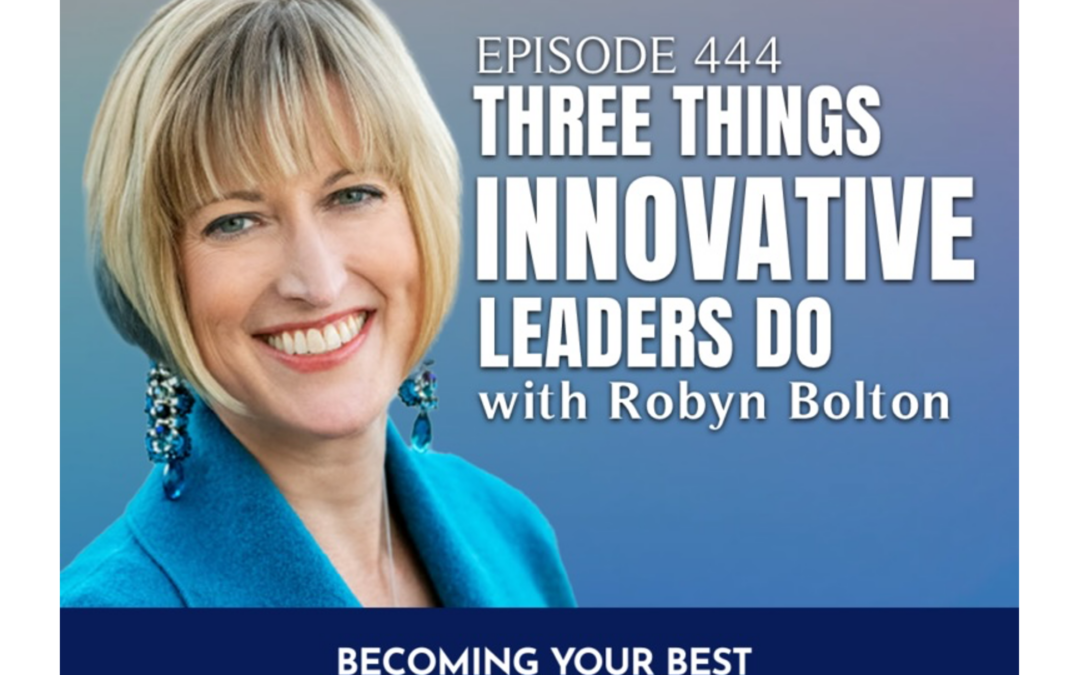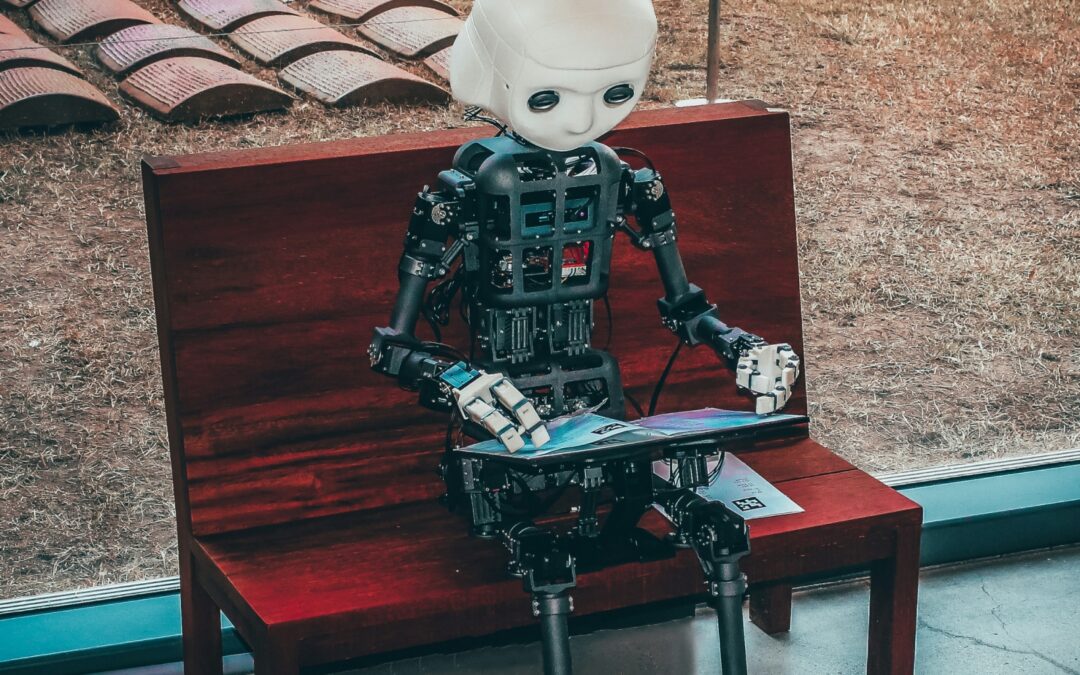
by Robyn Bolton | Sep 3, 2024 | Innovation
You know that asking questions is essential. After all, when you’re innovating, you’re doing something new, which means you’re learning, and the best way to learn is by asking questions. You also know that asking genuine questions, rather than rhetorical or weaponized ones, is critical to building a culture of curiosity, exploration, and smart risk-taking. But did you know that making a small change to a single question can radically change everything for your innovation strategy, process, and portfolio?
What is your hypothesis?
Before Lean Startup, there was Discovery-Driven Planning. This approach, first proposed by Columbia Business School professor Rita McGrath and Wharton School professor Ian MacMillan in their 1995 HBR article, outlines a “planning” approach that acknowledges and embraces assumptions (instead of pretending that they’re facts) and relentlessly tests them to uncover new data and inform and update the plan.
It’s the scientific method applied to business.
How confident are you?
However, not all assumptions or hypotheses are created equal. This was the assertion in the 2010 HBR article “Beating the Odds When You Launch a New Venture.” Using examples from Netflix, Johnson & Johnson, and a host of other large enterprises and scrappy startups, the authors encourage innovators to ask two questions about their assumptions:
- How confident am I that this assumption is true?
- What is the (negative) impact on the idea if the assumption is false?
By asking these two questions of every assumption, the innovator sorts assumptions into three categories:
- Deal Killers: Assumptions that, if left untested, threaten the idea’s entire existence
- Path-dependent risks: Assumptions that impact the strategic underpinnings of the idea and cost significant time and money to resolve
- High ROI risks: Assumptions that can be quickly and easily tested but don’t have a significant impact on the idea’s strategy or viability
However, human beings have a long and inglorious history of overconfidence. This well-established bias in which our confidence in our judgment exceeds the objective (data-based) accuracy of those judgments resulted in disasters like Chernobyl, the sinking of the Titanic, the explosions of the Space Shuttle Challenger and Discovery, and the Titan submersible explosion.
Let’s not add your innovation to that list.
How much of your money are you willing to bet?
For years, I’ve worked with executives and their teams to adopt Discovery-Driven Planning and focus their earliest efforts on testing Deal Killer assumptions. I was always struck by how confident everyone was and rather dubious when they reported that they had no Deal Killer assumptions.
So, I changed the question.
Instead of asking how confident they were, I asked how much they would bet. Then I made it personal—high confidence meant you were willing to bet your annual income, medium confidence meant dinner for the team at a Michelin-starred restaurant, and low confidence meant a cup of coffee.
Suddenly, people weren’t quite so confident, and there were A LOT of Deal Killers to test.
Make it personal
It’s easy to become complacent in companies. You don’t get paid more if you come in under budget, and you don’t get fired if you overspend. Your budget is a rounding error in the context of all the money available to the company. And your signing authority is probably a rounding error on the rounding error that is your budget. So why worry about ten grand here and a hundred grand there?
Because neither you, your team, nor your innovation efforts have the luxury of complacency.
Innovation is always under scrutiny. People expect you to generate results with a fraction of the resources in record time. If you don’t, you, your team, and your budget are the first to be cut.
The business of innovation is personal. Treat it that way.
How much of your time, money, and reputation are you willing to risk? What do you need your team to risk in terms of their time, money, and professional aspirations? How much time, money, and reputation are your stakeholders willing to risk?
The answers change everything.

by Robyn Bolton | Aug 28, 2024 | Innovation, Leadership, Tips, Tricks, & Tools
You were born creative. As an infant, you had to figure many things out—how to get fed or changed, get help or attention, and make a onesie covered in spit-up still look adorable. As you grew older, your creativity grew, too. You drew pictures, wrote stories, played dress-up, and acted out imaginary stories.
Then you went to school, and it was time to be serious. Suddenly, creativity had a time and place. It became an elective or a hobby. Something you did just enough of to be “well-rounded” but not so much that you would be judged irresponsible or impractical.
When you entered the “real world,” your job determined whether you were creative. Advertising, design, marketing, innovation? Creative. Business, medicine, law, engineering? Not creative.
As if Job-title-a-determinant-of-creativity wasn’t silly enough, in 2022, a paper was published in the Journal of Applied Psychology that declared that, based on a meta-analysis of 259 studies (n=79,915), there is a “male advantage in creative performance.”
Somewhere, Don Draper, Pablo Picasso, and Norman Mailer high-fived.
But, as every good researcher (and innovator) knows, the headline is rarely the truth. The truth is that it’s contextual and complicated, and everything from how the original studies collected data to how “creativity” was defined matters.
But that’s not what got reported. It’s also not what people remember when they reference this study (and I have heard more than a few people invoke these findings in the three years since publication).
That is why I was happy to see Fortune report on a new study just published in the Journal of Applied Psychology. The study cites findings from a meta-analysis of 753 studies (n=265,762 individuals) that show men and women are equally creative. When “usefulness (of an idea) is explicitly incorporated in creativity assessment,” women’s creativity is “stronger.”
Somewhere, Mary Wells Lawrence, Frida Kahlo, and Virginia Woolf high-fived.
Of course, this finding is also contextual.
What makes someone “creative?”
Both studies defined creativity as “the generation of novel and useful ideas.”
However, while the first study focused on how context drives creativity, the second study looked deeper, focusing on two essential elements of creativity: risk-taking and empathy. The authors argued that risk-taking is critical to generating novel ideas, while empathy is essential to developing useful ideas.
Does gender influence creativity?
It can. But even when it does, it doesn’t make one gender more or less creative than the other.
Given “contextual moderators” like country-level culture, industry gender composition, and role status, men tend to follow an “agentic pathway” (creativity via risk-taking), so they are more likely to generate novel ideas.
However, given the same contextual moderators, women follow a “communal pathway” (creativity via empathy), so they are more likely to generate useful ideas.
How you can use this to maximize creativity
Innovation and creativity go hand in hand. Both focus on creating something new (novel) and valuable (useful). So, to maximize innovation within your team or organization, maximize creativity by:
- Explicitly incorporate novelty and usefulness in assessment criteria. If you focus only on usefulness, you’ll end up with extremely safe and incremental improvements. If you focus only on novelty, you’ll end up with impractical and useless ideas.
- Recruit for risk-taking and empathy. While the manifestation of these two skills tends to fall along gender lines, don’t be sexist and assume that’s always the case. When seeking people to join your team or your brainstorming session, find people who have demonstrated strong risk-taking or empathy-focused behaviors and invite them in.
- Always consider the context. Just as “contextual moderators” impact people’s creative pathways, so too does the environment you create. If you want people to take risks, be vulnerable, and exhibit empathy, you must establish a psychologically safe environment first. And that starts with making sure there aren’t any “tokens” (one of a “type”) in the group.
Which brings us back to the beginning.
You ARE creative.
How will you be creative today?

by Robyn Bolton | Aug 20, 2024 | Podcasts

by Robyn Bolton | Aug 18, 2024 | Customer Centricity, Innovation, Tips, Tricks, & Tools
AI is everywhere: in our workplaces, homes, schools, art galleries, concert halls, and even neighborhood coffee shops. We can’t seem to escape it. Some hope it will unlock our full potential and usher in an era of creativity, prosperity, and peace. Others worry it will eventually replace us. While both outcomes are extreme, if you’ve ever used AI to conduct research with synthetic users, the idea of being “replaced” isn’t so wild.
For the past month, I’ve beta-tested Crowdwave, an AI research tool that allows you to create surveys, specify segments of respondents, send the survey to synthetic respondents (AI-generated personas), and get results within minutes.
Sound too good to be true?
Here are the results from my initial test:
- 150 respondents in 3 niche segments (50 respondents each)
- 51 questions, including ten open-ended questions requiring short prose responses
- 1 hour to complete and generate an AI executive summary and full data set of individual responses, enabling further analysis
The Tool is Brilliant
It took just one hour to gather data that traditional survey methods require a month or more to collect, clean, and synthesize. Think of how much time you’ve spent waiting for survey results, checking interim data, and cleaning up messy responses. I certainly did and it made me cry.
The qualitative responses were on-topic, useful, and featured enough quirks to seem somewhat human. I’m pretty sure that has never happened in the history of surveys. Typically, respondents skip open-ended questions or use them to air unrelated opinions.
Every respondent completed the entire survey! There is no need to look for respondents who went too quickly, chose the same option repeatedly, or abandoned the effort altogether. You no longer need to spend hours cleaning data, weeding out partial responses, and hoping you’re left with enough that you can generate statistically significant findings.
The Results are Dangerous
When I presented the results to my client, complete with caveats about AI’s limitations and the tool’s early-stage development, they did what any reasonable person would do – they started making decisions based on the survey results.
STOP!
As humans, we want to solve problems. In business, we are rewarded for solving problems. So, when we see something that looks like a solution, we jump at it.
However, strategic or financially significant decisions should never rely ona single data source. They are too complex, risky, and costly. And they definitely shouldn’t be made based on fake people’s answers to survey questions!
They’re Also Useful.
Although the synthetic respondents’ data may not be true, it is probably directionally correct because it is based on millions and maybe billions of data points. So, while you shouldn’t make pricing decisions based on data showing that 40% of your target consumers are willing to pay a 30%+ premium for your product, it’s reasonable to believe they may be willing to pay more for your product.
The ability to field an absurdly long survey was also valuable. My client is not unusual in their desire to ask everything they may ever need to know for fear that they won’t have another chance to gather quantitative data (and budgets being what they are, they’re usually right). They often ignore warnings that long surveys lead to abandonment and declining response quality. With AI, we could ask all the questions and then identify the most critical ones for follow-up surveys sent to actual humans.
We Aren’t Being Replaced, We’re Being Spared
AI consumer research won’t replace humans. But it will spare us the drudgery of long surveys filled with useless questions, months of waiting for results, and weeks of data cleaning and analysis. It may just free us up to be creative and spend time with other humans. And that is brilliant.

by Robyn Bolton | Aug 14, 2024 | Innovation, Tips, Tricks, & Tools
In 2020, the International Standards Organization, most famous for its Quality Management Systems standard, published ISO 56000, Innovation Management—Fundamentals and Vocabulary. Since then, ISO has released eight additional innovation standards.
But is it possible to create international standards for innovation, or are we killing creativity?
That’s the question that InnoLead founder and CEO Scott Kirsner and I debated over lunch a few weeks ago. Although we had heard of the standards and attended a few webinars, but we had never read them or spoken with corporate innovators about their experiences.
So, we set out to fix that.
Scott convened an all-star panel of innovators from Entergy, Black & Veatch, DFW Airport, Cisco, and a large financial institution to read and discuss two ISO Innovation Standards: ISO 56002, Innovation management – Innovation management systems – Requirements and ISO 56004, Innovation Management Assessment – Guidance.
The conversation was honest, featured a wide range of opinions, and is absolutely worth your time to watch.
Here are my three biggest takeaways.
The Standards are a Good Idea
Innovation doesn’t have the best reputation. It’s frequently treated as a hobby to be pursued when times are good and sometimes as a management boondoggle to justify pursuing pet ideas and taking field trips to fun places.
However, ISO Standards can change how innovation is perceived and supported.
Just as ISO’s Quality Management Standards established a framework for quality, the Innovation Management Standards aim to do the same for innovation. They provide shared fundamentals and a common vocabulary (ISO 56000), requirements for innovation management systems (ISO 56001 and ISO 56002), and guidance for measurement (ISO 56004), intellectual property management (ISO 56005), and partnerships (ISO 56003). By establishing these standards, organizations can transition innovation from a vague “trust me” proposition to a structured, best-practice approach.
The Documents are Dangerous
However, there’s a caveat: a little knowledge can be dangerous. The two standards I reviewed were dense and complex, totaling 56 pages, and they’re among the shortest in the series. Packed with terminology and suggestions, they can overwhelm experienced practitioners and mislead novices into thinking they have How To Guide for success.
Innovation is contextual. Its strategies, priorities, and metrics must align with the broader organizational goals. Using the standards as a mere checklist is more likely to lead to wasted time and effort building the “perfect” innovation management system while management grows increasingly frustrated by your lack of results.
The Most Important Stuff is Missing
Innovation is contextual, but there are still non-negotiables:
- Leadership commitment AND active involvement: Innovation isn’t an idea problem. It’s a leadership problem. If leadership delegates innovation, fails to engage in the work, and won’t allocate required resources, you’re efforts are doomed to fail.
- Adjacent and Radical Innovations require dedicated teams: Operations and innovation are fundamentally different. The former occurs in a context of known knowns and unknowns, where experience and expertise rule the day. The latter is a world of unknown unknowns, where curiosity, creativity, and experimentation are required. It is not reasonable to ask someone to live in both worlds simultaneously.
- Innovation must not be a silo: Innovation cannot exist in a silo. Links must be maintained with the core business, as its performance directly impacts available resources and influences the direction of innovation initiatives.
These essential elements are mentioned in the standards but are not clearly identified. Their omission increases the risk of further innovation failures.
Something is better than nothing
The standards aren’t perfect. But one of the core principles of innovation is to never let perfection get in the way of progress.
Now it’s time to practice what we preach by testing the standards in the real world, scrapping what doesn’t work, embracing what does, and innovating and iterating our way to better.




